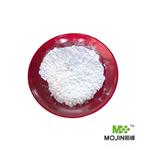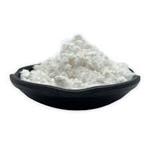Hypochlorous acid,HOCl,is a weak,unstable acid existing only in solution. Hypochlorous acid decomposes upon standing. The rate of decomposition depends on the concentration, pH, exposure to light, and the presence of contaminants that act as catalysts, for example, cobaltaus hydroxide. Hypochlorous acid is a powerful oxidizing agent and is used in bleaching operations. The compound maybe prepared by the reaction of chlorine monoxide and water, sodium hypochlorite and an acid,or chlorine with an aqueous suspension of mercuric oxide.
Hypochlorous acid [7790-92-3], HOCl, Mr 52.5, is only moderately stable in aqueous solution. It is colorless when dilute and yellowish at higher concentrations. Hypochlorous acid is one of the most powerful oxidizing agents known. Hypochlorous acid solution decomposes exothermically. The main decomposition products are hydrochloric acid and oxygen.
Greenish-yellow aqueous solution.
Highly unstable, weak acid. Decomposes to hydrogen chloride and oxygen. Can exist only in dilute
solutions.
Greenish-yellow aqueous solution; unstable; weak acid, pKa7.40 at 25°C;soluble in water.
Disinfectant. Because of its instability, hypochlorous acid is not used extensively as an oxidizing or bleaching agent. It was used mainly in the water treatment industry for slime control, for treatment of drinking water, and for sterilization of swimming pools. These applications have now been taken over by the more stable hypochlorites.
ChEBI: Hypochlorous acid is a chlorine oxoacid with formula HOCl; a weak, unstable acid, it is the active form of chlorine in water. It has a role as a human metabolite, an EC 3.1.1.7 (acetylcholinesterase) inhibitor and an EC 2.5.1.18 (glutathione transferase) inhibitor. It is a member of reactive oxygen species and a chlorine oxoacid. It is a conjugate acid of a hypochlorite.
Hypochlorous acid is obtained by dissolving chlorine in water, or by addingbleaching powder or sodium hypochlorite to water. A better method of pro-duction is passing chlorine gas into a well-agitated suspension of mercuricoxide:
2Cl2 + 2HgO + H2O → HgO•HgCl2 + 2HOCl
or by distilling chlorine hexahydrate and mercuric oxide at low pressure:
2Cl2•6H2O + HgO → 2HOCl + HgCl2 + 5H2O
The latter process can yield a 25% acid solution.
Hypochlorous acid also may be obtained by hydrolysis of chlorine monoflu-oride:
ClF + H2O → H+ + F¯ + HOCl
The above reaction may be explosive and is not recommended for preparinghypochlorous acid.
Irritant to skin and eyes.



